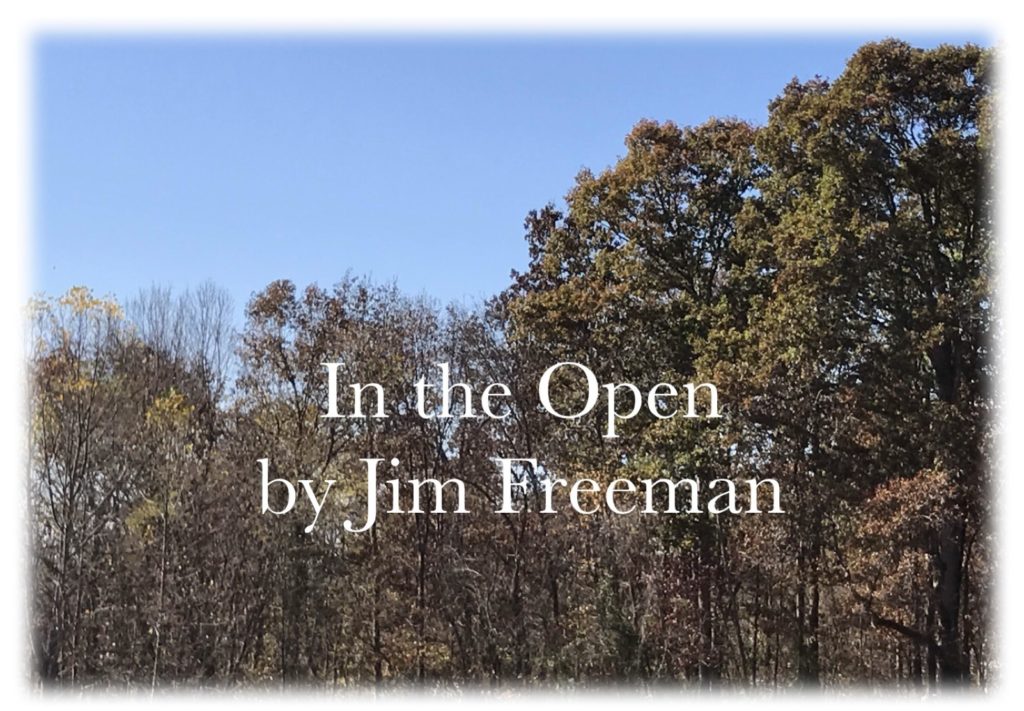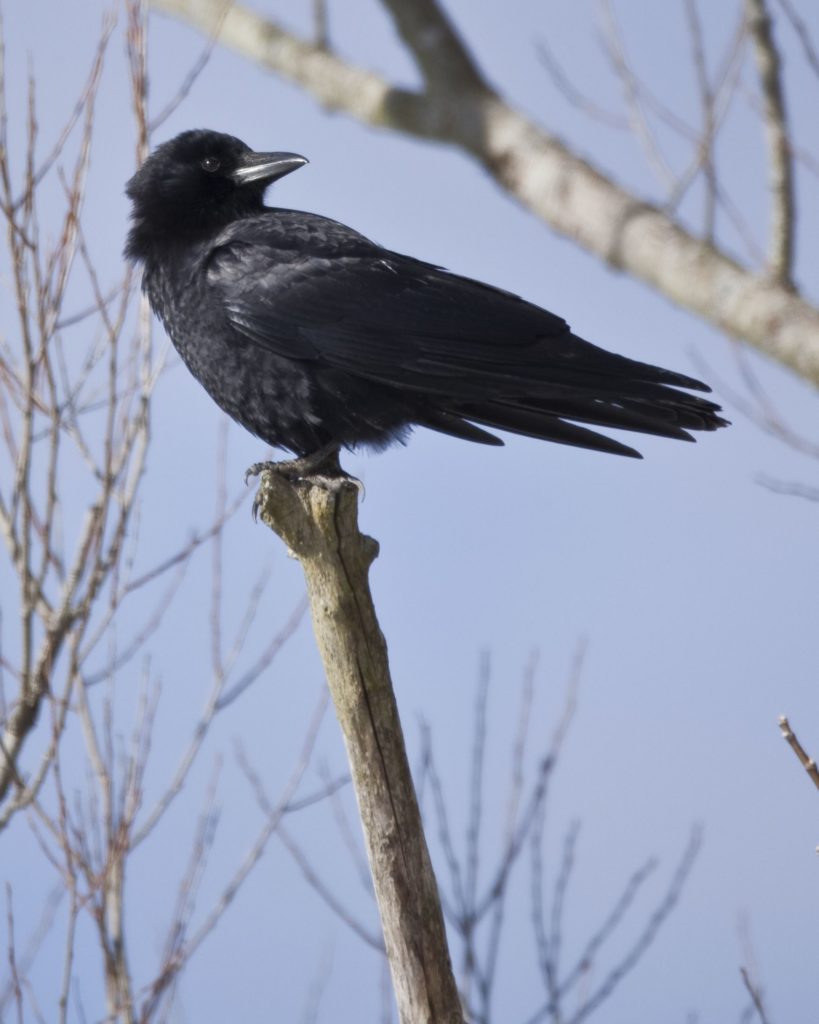What do you know about American Crows?


What do you know about American Crows?
Chances are you need no introduction to the American Crow (Corvus brachyrhynchos), this handsome, large, all-black bird is a familiar sight throughout the entire United States, and it is well-known for its distinctive caaw-caaw-caaw call.
You know the crow when you see it, and if you drive through Pomeroy around dusk you will frequently see huge flocks of crows roosting in the trees and shrubs along the riverbank.
I occasionally see them when I am running on the path there; sometimes they fly away due to my presence, other times they don’t – it can be sort of creepy, like the build-up to a scene from Alfred Hitchcock’s 1963 movie, The Birds. I have no idea why they like that area so much, perhaps it’s the southern exposure. In any event, there are often thousands of them. For the record I have never been attacked, although one evening they did do a thorough whitewashing job on my car while it was parked at a popular eating establishment.

This communal roosting affords the flock a measure of protection. They probably know that people can’t harm them there, and that the presence of people adds another level of protection from predators.
Crows are very adaptable. They are omnivorous scavengers and hunters and will feed on insects of all types, carrion, human food scraps, seeds, eggs, nestlings, small amphibians, animals, and reptiles, nuts, berries, and even visit bird feeders. They are comfortable living in small towns, big cities, wilderness, farmland, pretty much anywhere there is shelter and food.
Crows are family oriented and probably a little more monogamous than humans; pairs will form large families that remain together for years and help rear new nestlings. In the wild they usually live 7-8 years, but domesticated birds can live well over 20 years.
Predators of crows in the wild include snakes, raccoons, other birds and domesticated cats (nestlings), and owls, hawks and other raptors (adults), and of course humans. The deadliest crow predator these days is apparently the mosquito – they are extremely susceptible to West Nile virus and by some accounts the crow population has decreased substantially since the virus was introduced in 1999.
Crows will readily swarm owls and hawks to drive them away. One day I watched a crow aggressively attack a soaring red-tailed hawk. The hawk counter-attacked and the two birds wheeled and turned in circles, spiraling steadily towards the treetops, at which point the crow made a successful dive into the sheltering canopy.
An Army friend of mine once described having a “pet” crow that as a fledgling became accustomed to their feeding and handling. As the bird matured it started keeping a respectful distance between it and the humans but would frequently land nearby as if to watch what the people were doing. Eventually it started bringing its young to watch the humans as well.
Supposedly a flock of crows is called a murder, probably because they are dark and mysterious, in any event it’s a stupid term invented by silly people attempting to project human motives into another species based on its physical characteristics.
Crows are fascinating and clever animals: they can learn to “talk” (especially in captivity), can recognize individual human faces and voices, make and use tools and solve puzzles. They also seem to be able to reason what other crows might be thinking, and to learn from other birds’ experiences (another skill that many humans seem to lack).
Crows can be devastating to many types of crops, not just the stereotypical corn field, and will eat freshly planted seed, and the seeds of more mature crops. They will also peck produce like tomatoes, rendering them unmarketable. In the crows’ defense, some biologists estimate that the crows make up for some of the damage by eating insect pests.
In case you are wondering, scarecrows don’t really work very well, the birds quickly become accustomed to them unless the scarecrows are moved occasionally, clothing changed out, or reinforced by the occasional gunfire or dead crow hanged in effigy.
Crows are protected internationally by the Migratory Bird Treaty Act of 1980, but they can be hunted and the crow hunting season is long with generous (no) bag limits. Despite their intelligence, the term “bird brain” doesn’t usually denote great intelligence, so crow hunters can often rack up some impressive numbers – often to the joy of local farmers. A standing depredation order generally allows farmers to shoot birds in their fields at any time provided they comply with other local, state or federal ordinances.
You don’t have to like them to have an appreciation for these interesting birds.
Despite the most aggressive efforts of humans to limit their numbers, natural predators, and West Nile Virus, the number of American crows is estimated around 30 million or so, and they have a conservation status of “least concern.”
Jim Freeman is the wildlife specialist for the Meigs Soil and Water Conservation District. He can be contacted weekdays at 740-992-4282 or at [email protected].








